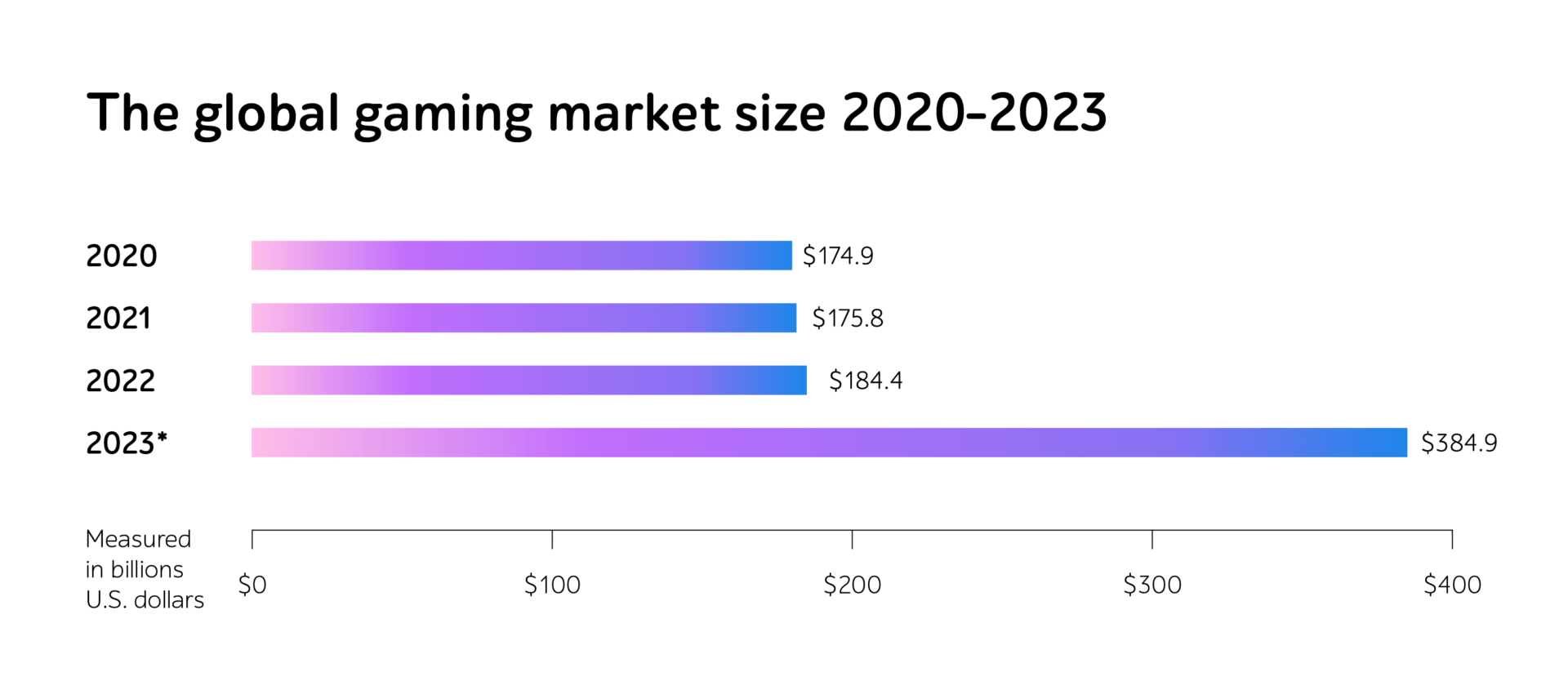
Ready, steady, test: How QA drives seamless gaming experiences
A significant jump in the number of players occurred during the isolation of 2020, boosting the revenues in digital gaming to $174.9 billion in the same year. Today, over 3 billion people play video games to combat boredom, escape the real world, make new connections, and even learn new skills.
As the number of players grows, so does the role of QA to safeguard game integrity, fulfill end-user needs, and build their trust. Therefore, the question arises: how can an effective QA strategy help you release a first-rate game, be it on PC, console, or mobile devices?
We’ve got you covered: in this blog, we’ll walk through the reasons why quality assurance is a must and unveil testing types, helping deliver exceptional game experiences to consumers.
The pivotal role of QA for video games: 3 reasons named
Let’s delve into the reasons why QA plays a critical role for the gaming industry.
1. Optimized costs
By implementing QA early in the development phases, organizations track and eliminate defects before they cause any damage, like constant crashes or failed in-game purchases, and avoid expensive post-launch expenditures.
Just look at this case: due to high anticipation, CD Projekt SA compromised on quality to meet the release schedule of Cyberpunk 2077. The game failed due to dozens of bugs, which damaged the studio’s quality-first image. Fixing the issues cost the company almost $1b.
This kind of a misstep can be prevented with professional QA.
2. Advanced gaming experience
A buggy game is unlikely to be enjoyable for players, instead, it hinders gameplay, causes irritation, and generates a bunch of bad reviews. As a result, it tarnishes a company’s reputation, erodes loyalty, ultimately reducing revenue.
QA helps turn things around. By meticulously identifying glitches and technical hurdles, organizations ensure an immersive environment, fine-tune gameplay mechanics, and prevent lags and disruptions. All these contribute to an uninterrupted experience, keeping users engaged and enhancing their retention rates.
3. Improved safety and reliability
In-game vulnerabilities are of value to cybercriminals, allowing them to steal internal currencies, expensive digital items, and private information. According to Akami’s State of the Internet report, cyberattacks on player accounts and gaming companies increased by 167% in 2022.
Through quality assurance, businesses uncover injection points, reducing the risk of fraud and preventing cheating and unauthorized access.
7 core testing types to release top-notch, engrossing games
To deliver a high-quality game and provide an unsurpassed first impression, organizations can apply 7 critical types of testing.
1. Functional testing
Before the game goes live, businesses need to ensure that it meets the stated specifications and runs smoothly. Functional testing helps trace out issues related to audio and video, design, basic game mechanisms, and payment gateways, as well as errors in installation and launching.
2. Performance testing
In June, PUBG’s concurrent players reached over 376,000. Consider the high performance required to keep the game from crashing!
To ensure flawless operation, businesses should conduct stress testing. Since a sudden surge of users can lead to slow functioning, data losses, and security issues, it demonstrates how the game operates beyond its projected capacity.
Load testing, in its turn, allows checking the overall performance and identifying the maximum number of simultaneous players.
3. Cybersecurity testing
The global gaming market is estimated to reach $384.9 billion by the end of 2023. As the industry grows, so does the risk of cyber incidents.

Source: Statista
In 2019, cybercriminals discovered a vulnerability in Fortnite and gained access to 80 million accounts. They stole virtual currency, eavesdropped and recorded conversations, and used players’ credit cards to purchase items. No one wants to get in a similar situation, right?
So, how to mitigate such hazards? Through robust cybersecurity testing, businesses uncover weaknesses in cyber defenses, ensure sensitive data protection, prevent hacking and cheating, and safeguard in-game transactions.
As part of cybersecurity, compliance testing helps make sure that the game meets industry regulations to increase user trust and avoid hefty fines.
4. Compatibility testing
According to the Statista Global Consumer Survey, 54% of adults prefer playing video games on smartphones, 35% — on game consoles, 32% — on PCs or laptops, and 25% — on tablets.
To provide an unrivaled experience to all consumers, the organization needs to test compatibility across platforms, operating systems, and browsers.
As people use a wide range of hardware configurations (different phone models, graphics cards, processors, and memory sizes), it’s also critical to guarantee that the game runs smoothly on various setups without crashes.
5. Localization testing
To make the game enjoyable for players across the globe, companies should prioritize localization tests. It allows the adaptation of the content to the cultural nuances of different regions and ensures the translated version of the app is consistent and clear.
Localization QA helps identify bugs in these three aspects:
- National: incorrect currencies, calendars, metrics, number formats, and symbols.
- Visual: improper fonts, truncated characters, and placement of graphic elements.
- Functional: misleading commands and links, corrupted audio or text.
6. Usability testing
Consumers expect to spend a minimal amount of time figuring out how to navigate the game. After all, who would want to waste hours on it?
To make sure that players can effortlessly dive into the game, QA teams may suggest adopting usability testing. This helps identify glitches in the user interface, controls, mechanics, and menus, providing engaging experiences with no interruptions.
7. Test automation
To speed up QA processes, release a high-quality game faster, and stay one step ahead of the fierce competition, businesses often opt for test automation.
It’s especially beneficial in the long run as it reduces QA expenditure, saves efforts on repetitive tasks, and facilitates regression testing that is vital to make sure the newly added features haven’t affected existing functionality.
Closing remarks
As the gaming industry continues to grow and evolve, one thing remains constant: the pivotal role of QA in helping optimize costs, deliver advanced experiences to players, and improve software safety and reliability.
To make the game stand out in the IT market, businesses may conduct 7 core testing types: functional, performance, cybersecurity, compatibility, localization, usability, and automated ones.
Searching for QA support in releasing top-performing video games? Contact a1qa’s team.








